A car survival kit is absolutely one of the most important preps a person can have. When you’re on the go, you’re at your most vulnerable. There’s nothing quite like the feeling of panic as you’re stuck on the side of the road with a smoking engine and a car full of hungry kids. Whether you live in the boonies, or in a thriving metropolis, having some basic essentials in the cargo area of your car can save at the very least your radiator, and at the most, your life.
[the_ad_placement id=”in-text-1-type-r”]Though we all rely on roadside assistance and cell phones to get us out of most binds, there may be a time and place where this simply isn’t an option for you.
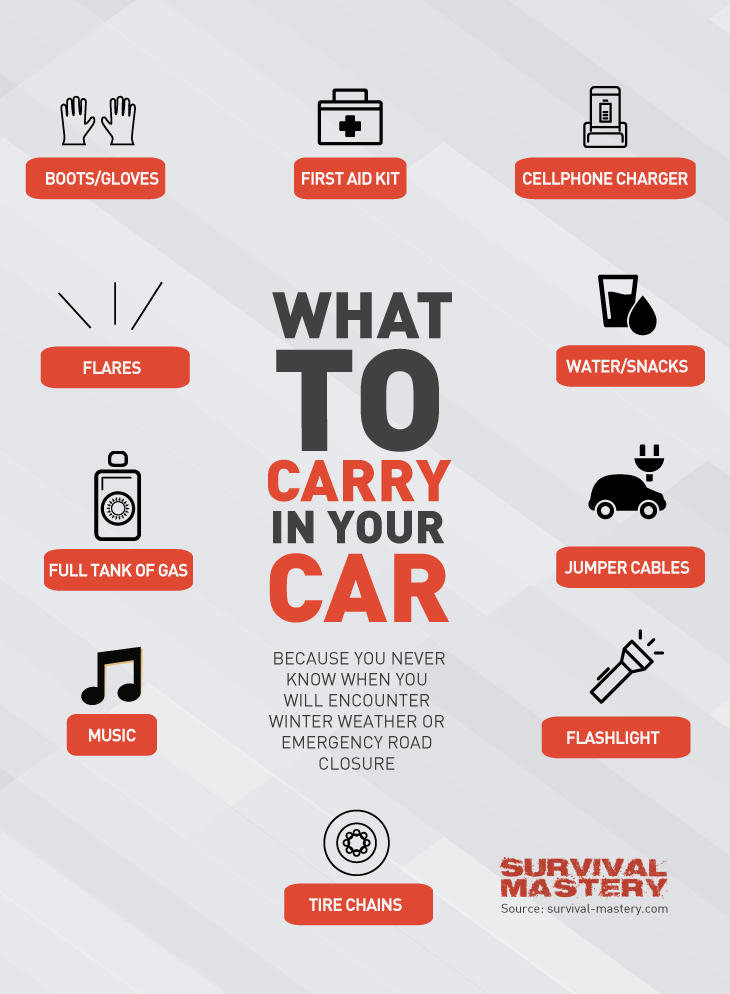
The bottom line: it’s best to look out for yourself than it is to depend on others to do the job for you-you may not always be able to get a cell phone signal, and there may not always be good Samaritans driving down the highway, ready to lend a hand.
How to buy a right kit?
There’s a market and a maker for everything these days, and the survival community is certainly no exception. With its growth in interest has come a tremendous growth in products, giving the everyday prepped endless options and flexibility. Bug out bags and survival kits are certainly no exception. A quick Amazon search for vehicle emergency kit produces thousands of results. If you want an easier option, check out our article about care safety kits.
Most of these ready-made kits are very vehicle-specific. What I mean by that is that they have a plethora of supplies and tools to take care of basic car troubles, but very little to take care of the people inside them. However, if you’re not terribly sure of where to start, or just want to save yourself some trouble, these kits can be handy. And running between $30 and $75, they’re pretty affordable too.
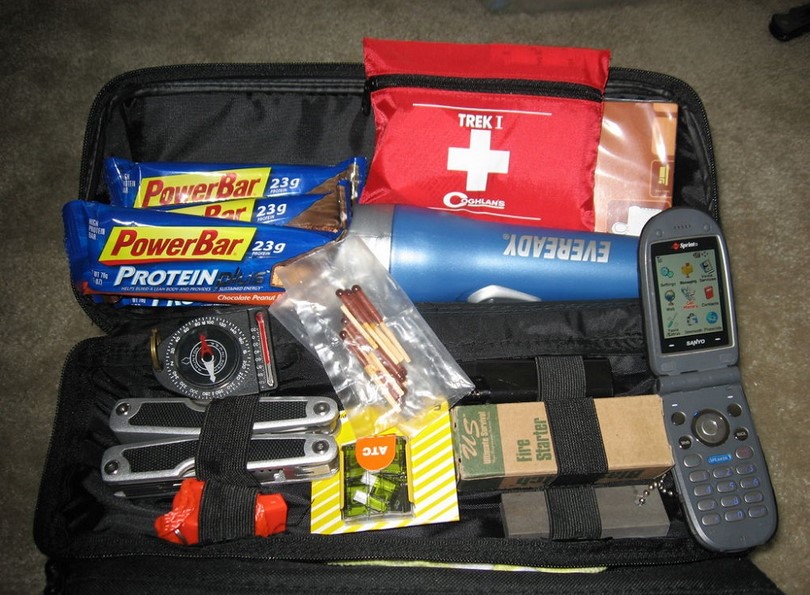
Most of them include all of the basics for dealing with common engine problems and things like dead batteries and flat tires. In addition, they have some roadside safety accessories to help other drivers spot you, like fluorescent caution triangles. Not a bad deal, and it can save you some hassle with assembling your own emergency vehicle maintenance kit.
[the_ad_placement id=”in-text-2-type-r”]If you decide to go this route, I recommend one of the AAA kits-they’re pretty comprehensive and basic, and very affordable. In addition to having some basic repair tools, they have things like emergency road markers, ponchos, and flashlights as well. If you’re not one to customize everything these are a great bet, and save you a little legwork in hunting down a lot of individual components.
If you decide to get one of these, make sure you’re prepared to go through it and ensure that it legitimately has what you need for emergency roadside care. Every vehicle and every family is different, and what works for one may not work for you.
Building your own kit and be prepared
This is my preferred method. When it comes to emergency vehicle maintenance, there are a lot of variables to consider, particularly involving the type of car you drive. Consider mechanical problems you’ve had in the past, and the likelihood of them happening again. Then factor in your vehicle specs to determine exactly what kind of supplies it would benefit you to have on board. To cover all necessities, first read our article about a DIY survival kit which can come in handy at any times.
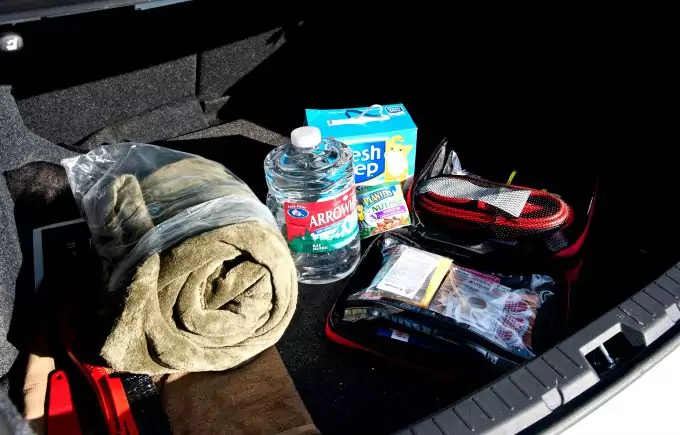
For example, if you drive a Jeep that has a history of oil leaks, keep at least one container of the right type of oil in your kit, along with a funnel, in case you need to top it off on the side of the road. Here are some pretty common vehicle problems people run into all the time that can usually be dealt with on the side of the road, and a few items that you can stock to deal with them on the go. For topics dealing with all essentials you need for a car survival kit, read on our article to find out more.
Problem #1 – engine overheating
There can be any number of reasons for an engine to overheat, leaky hoses or a malfunctioning radiator being the usual suspects. However, if you continue to drive the vehicle as the engine overheats, it can spell permanent and expensive disaster. Instead, immediately pull over as you notice your temperature gauge start to climb. Then, check your antifreeze levels (but don’t touch that metal cap without some thick gloves; there’s usually a plastic cap somewhere in the engine compartment where you can add more without the risk of burning your fingers on the hot metal).
If your levels are really low, you may be able to hobble home or to a mechanic shop by topping off your antifreeze, depending on the problem. Make sure your solution is properly diluted though!
Pack: Antifreeze, water and empty jug (to dilute is it’s not pre-mixed), funnel, leather gloves.
Problem #2 – oil leaks
The bane of many vehicles’ existence, oil leaks are incredibly common, and if left unchecked, can lead to a host of problems. If you find your engine’s running rough, pull over and take a look at the dipstick. While you don’t want to do a full oil change on the side of the road, if your levels are low, this can be critical. Get your kit out and top off the tank, at least enough to get you home.
Pack: Motor oil, paper towels, funnel.
Problem #3 – car out of gas
Depending on where you live or the type of commuting you typically do, this may or may not be a concern. If you can walk to a gas station in five minutes, this may be of little consequence to you, but it’s best to plan for the unexpected. If you have a small vehicle with little cargo space, it may be best to designate a spot for emergency gas money rather than stow a five gallon gas tank.
However, if you do have the cargo space, having an emergency gas tank on board is incredibly helpful. Consider how much you may need to get to the nearest gas station, particularly if you live in a rural area-you don’t want to be stranded because you forgot to fill up in town.
Problem #4 – dead battery/dirty posts
Another common problem, dead batteries seldom happen when you’re on the go, but rather when you come back out to start your car, and get either a sad sputtering, or nothing at all. Cold weather can exacerbate this problem, so it’s particularly important to be prepared for this one in the winter. A poorly functioning alternator can be the bigger cause of this problem, but until you can get that addressed, try to find someone who’s willing to give you a jump.
In addition, sometimes something as simple as dirty battery posts can cause your vehicle not to start. Thankfully, most auto parts shops carry handle little post cleaner gadgets. Having had to use one a few times myself, I can tell you it’s a cheap, simple, and invaluable tool to have. Save yourself some heartache and pick one up.
Then, if your car doesn’t start, check your posts before you go hunting for a jumping buddy. If they are covered in grime, remove the cables from the battery, and use this little tool to brush away the oil and grime. Replace the cables, and see if the engine turns over.
Pack: jumper cables, battery post cleaner.
Problem #5 – flat tire
This one needs little introduction. There is nothing worse than that feeling of panic that grips you as your steeling wheel is jerked to side, and the dull slap of limp rubber on pavement meets your ears. Prepare for this eventuality in the most obvious way-have a good spare tire mounted on your vehicle at all times.
In the even that this should happen to you, familiarize yourself with the process of changing a tire, and plan to do so in the least favorable conditions (fate has a wicked sense of humor-it’s likely to be pouring the next time you get a flat). For a more in-depth procedure of fixing a flat tire, we have this great article which will help you more.
Pack: spare tire, tire iron, container for lug nuts, jack.
Other basic essentials
So since you have your car repair essentials, there are a few other basics that are staples in any other survival kit that can be particularly useful in this scenario.
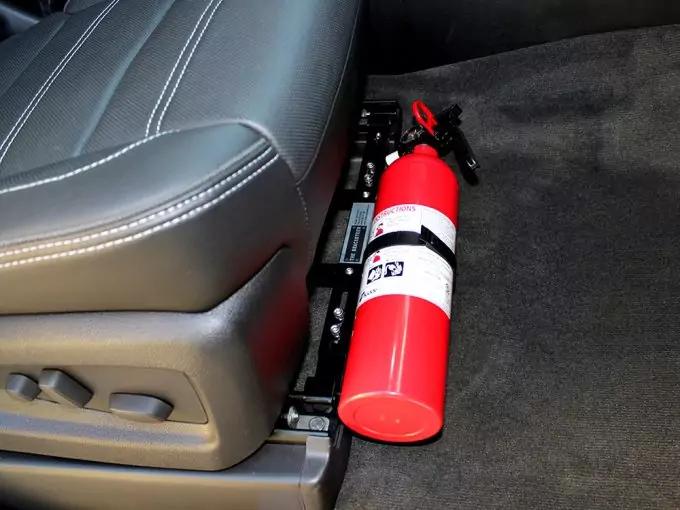
You can adapt these basics to suit your unique needs.
- Flashlights. Consider that in an emergency roadside scenario, you’re going to need your hands free. Flashlights are handy, but you also want to have plenty of hands free light sources. LED headlamps are an excellent investment, as are magnetic LED lamps. These high powered lights are great for sticking on the underside of your car’s hood while you work. Keep plenty of batteries on hand. You find it hard to pick one for your needs? Then take a look at our reviews on the best flashlight and make that decision easier for yourself.
- Food and water. Depending on your scenario, you never know how long you could be stranded without help. We live an hour away from the nearest city, so when I was pregnant and travelling alone, I always made sure to take a bag of “emergency snacks”. As silly as it sounds, a bad day will only get worse for you if you have low blood sugar. Throw in a scenario like being buried under a snowbank, and having a couple days’ worth of food in your kit is definitely not a bad idea. What food you might ask? Take a look on our survival emergency food kits article and you will know!
Water is just as crucial, if not more so. You’ll want to have at least a few gallons on hand for drinking, but then some as well for the car. You may need to use it for everything from diluting antifreeze to putting out a fire. Which brings me to my next point… - Fire extinguisher. Engine fires are no joke, and nothing will make your heart race like seeing flames jump out of your engine well. Having a fire extinguisher (and actually knowing how to use it) can not only protect you and your family, but also the spread of a fire into surrounding areas.
- Personal items. It’s always a good idea to have a spare change of clothes, in case you end up in a messy situation. Cold, wet clothing can cause more than just discomfort-hypothermia is a real concern in drafty, roadside conditions. Also good to have on hand are some basic personal items, like toilet paper, pain relievers, and hand sanitizer.
Packing for the weather: seasonal preparedness
In addition to these items, you want to make sure you keep a seasonal preparedness kit in your rotation. The weather can largely impact an emergency situation, complicating a bad situation even further.
As the seasons come and go, stock your vehicle with some of these items accordingly.
- Snow shovel. If you slide off the road, having a snow shovel can help you dislodge yourself from a snow bank. In addition, if you wind up stuck overnight, you can dig yourself out, making you visible to emergency vehicles.
- Kitty litter. It may seem like an odd addition, but cat litter is great for putting a little traction under your tires. If you can’t find a friend to help push, throwing some of this on the ground around your tires can give you just enough grip to find your footing again and get out of a slick spot.
- Electric blanket. In a really bad scenario where it’s very cold, and you may not have enough gas to run your engine, an electric blanket can be a lifesaver. They make several designed just for these scenarios that plug right into your car’s cigarette lighter. Hop online and shop around for one to keep in your car-it’s an invaluable resource. A handy emergency blanket is also needed, so check out our article on the best ones in the market.
- Warm clothes/boots. With a car survival kit, you always want to anticipate having to be outside of your vehicle in the elements at least a little. Make sure your car is stocked with plenty of extra layers for you to throw on. If you can swing it, a pair of snow boots is great to have on hand as well. Consider adding a pair of warm gloves to keep your fingers warm and nubile while you may be working with nuts and bolts in the cold wind.
- Ponchos/rain gear. Staying dry is absolutely tantamount to survival. Make sure you have a few heavy duty (preferably fluorescent) ponchos on hand for dealing with disaster in a downpour.
Being smart: roadside safety
In the end, the most important thing you can bring with you is your common sense. If you experience engine failure or poor driving conditions, the most ideal scenario is to make it to a lot or pull off that is well off the road, and address your issues there. However, we all know that’s not always an option.
[the_ad_placement id=”in-text-3-type-r”]If you should wind up on the side of the road, or partially obstructing a lane, take the proper precautions to make sure other drivers can clearly see you. This is particularly important in poor weather conditions where snow or rain may further affect visibility. Make sure you have plenty of highway markers in your survival kit to place at varying intervals around your car, giving other drivers plenty of time to react to your presence.
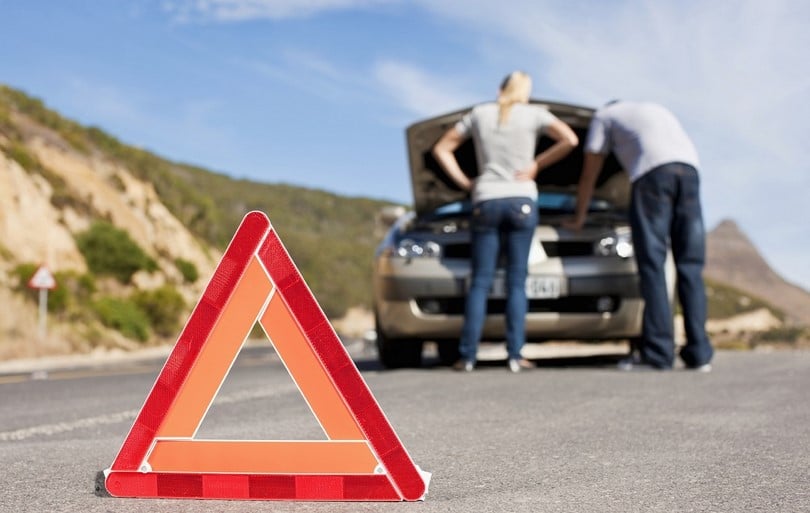
In addition, only get out of your car if absolutely necessary, or if you think you may be safer somewhere else. Many people have lost their lives on the side of the road as they are hit by a passing vehicle. Be smart, and be aware of your surroundings.
Prep like a pro
In the end, you know your travel habits better than anyone. You know the ins and outs of your vehicle’s history. You know what your local weather can do to your travel conditions. These basic tips will certainly get you started to building your own car survival kit, but it’s up to you to assess what it is that you need based on your unique lifestyle.
Figure out what you have the space for in your vehicle, and find a container to keep everything neatly stowed away and organized. Try to be practical about the amount of space you need. If you have to remove your kit every time you fill up the car with groceries, it will do you little good. If you have a small, compact car, and space is a limiting factor in your preparedness, do not allow it to limit you completely. Look into rooftop storage options-whatever you can mount to your car.
Unfortunately, this kit isn’t just for those in the prepping community. I’ve seen too many people stranded on the side of the road, completely helpless, and completely clueless, to ever let me think any of this was optional. You can only count on the kindness of strangers and the strength of a cell phone signal so often-they may not always be there to save your neck.
Take yours and your family’s safety into your own hands, and rest assured knowing that you’re ready for just about anything life throws at your while you’re on the road. Likewise, check out our article on how to assemble a get home bag to prepare yourself for anything.






This is all great, but what if you have one of those Smart cars, which are super small and only have the front two seats?
Another quick tip when assembling the kit.
Don’t be cheap when it comes to jumper cables. Buy the right ones. Make sure they are LONG. Look at the clamps on the end they should have nice sharp teeth to grip the terminals, and you should have to use both your hands to open them. It will prevent accidents with the clamps falling off which can be dangerous.
The idea of car kit is a lot better compared to a kit one has to carry around all the time. Car kit gives one so many options and eliminates the situation of being stranded. Interesting post!!
That’s very true, Robert, a car survival kit ensures you have all the supplies you might need.
Hi yall, been reading here for a while first comment.
The car kit is an essential item for all drivers, or should be. Being a mechanic by trade i am amazed how many people drive around with out even a set of jumper cables.
So if i may offer some of my advice.
Jumper cables, the heavier gauge the wire the more current they will carry. I have experienced jumper cables made that are just to light to do the job. Switch to a heavier cable and worked fine.
A tool kit, stream line it, find out what your needs are and get just them tools. For instance if you drive a Chevy you will never use that 17mm wrench found in most tool kits. Dont forget hammer, screwdrivers, and an 8 or 10 inch piece of pipe to get extra leverage on ratchets.
Also i woud suggest something like a Rockford power pack/jump starter. Weighs about 2lbs. Will charge cell phones, lap tops, ipods, etc., and will also jump start a car. Wont do like a diesel truck but most passenger cars no problem. Comes with all the attachments you need and can be recharged via car cigarette lighter or a wall socket. Small and portable, cost is not to bad around $60 – $200, depending on accessories. oh has a built in flash light that will blink S.O.S. also.
Antifreeze, i would usually never by the 50/50 premix at the auto parts store. Its cheaper to mix it youself. But in an emergency situation you may not have excess to a water source and you sure dont want to use your drinking water, so i would get the premix in that situation. Make sure that you by premix and do not mix it your self. The premix is sealed so that the water will not evaporate.
I have found that a couple .50 cal ammo cans fit nicely under the backseat of my truck for storage. Speaking of trucks, if you own one invest in a good tow strap. You may just save someones life with it.
Sorry for being long winded, hope this helps some.
Oh one last thing, check the air in your spare tire when ever you check the air in your tires. You would not believe how many people drive around with an under inflated spare tire.